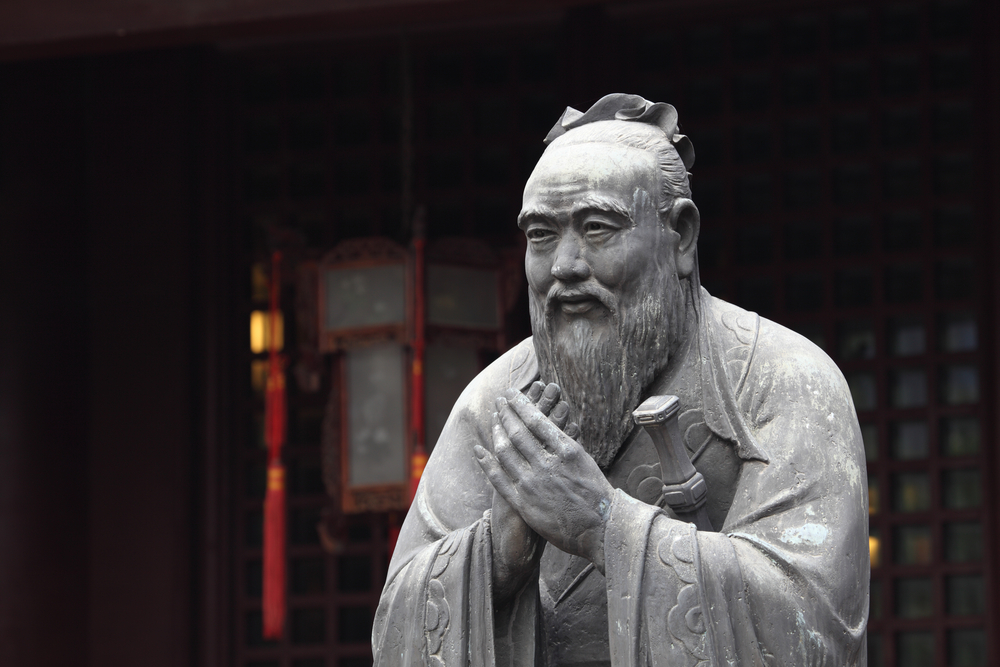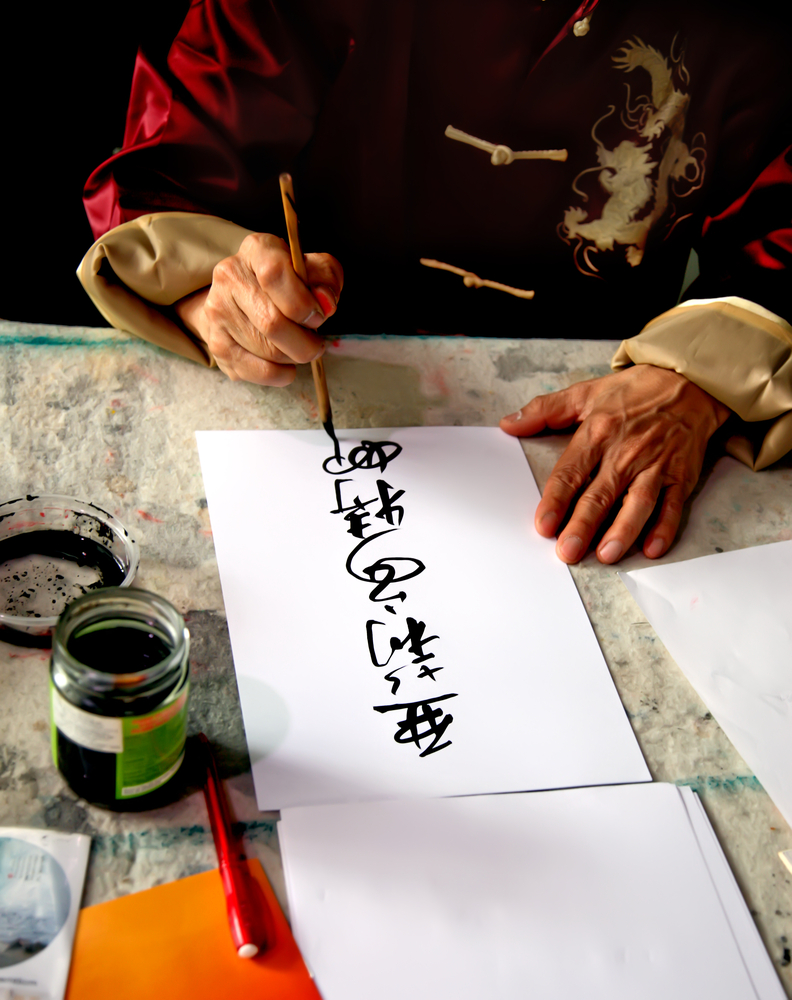Chinese Culture: Customs & Traditions of China
China is an extremely large country — first in population and fifth in area, according to the CIA — and the customs and traditions of its people vary by geography and ethnicity.
About 1.4 billion people live in China, according to the World Bank, representing 56 ethnic minority groups. The largest group is the Han Chinese, with about 900 million people. Other groups include the Tibetans, the Mongols, the Manchus, the Naxi, and the Hezhen, which is smallest group, with fewer than 2,000 people.
"Significantly, individuals within communities create their own culture," said Cristina De Rossi, an anthropologist at Barnet and Southgate College in London. Culture includes religion, food, style, language, marriage, music, morals and many other things that make up how a group acts and interacts. Here is a brief overview of some elements of the Chinese culture.
Religion
The Chinese Communist Party that rules the nation is officially atheist, though it is gradually becoming more tolerant of religions, according to the Council on Foreign Relations. Currently, there are only five official religions. Any religion other than Buddhism, Taoism, Islam, Catholicism and Protestantism are illegal, even though the Chinese constitution states that people are allowed freedom of religion. The gradual tolerance of religion has only started to progress in the past few decades.
About a quarter of the people practice Taoism and Confucianism and other traditional religions. There are also small numbers of Buddhists, Muslims and Christians. Although numerous Protestant and Catholic ministries have been active in the country since the early 19th century, they have made little progress in converting Chinese to these religions.
The cremated remains of someone who may have been the Buddha were discovered in Jingchuan County, China, with more than 260 Buddhist statues in late 2017. Buddha was a spiritual teacher who lived between mid-6th and mid-4th centuries B.C. His lessons founded Buddhism. [Cremated Remains of the 'Buddha' Discovered in Chinese Village]
Language
There are seven major groups of dialects of the Chinese language, which each have their own variations, according to Mount Holyoke College. Mandarin dialects are spoken by 71.5 percent of the population, followed by Wu (8.5 percent), Yue (also called Cantonese; 5 percent), Xiang (4.8 percent), Min (4.1 percent), Hakka (3.7 percent) and Gan (2.4 percent).
Get the world’s most fascinating discoveries delivered straight to your inbox.
Chinese dialects are very different, according to Jerry Norman, a former professor of linguistics at the University of Washington and author of "Chinese (Cambridge Language Surveys)" (Cambridge University Press, 1988). "Chinese is rather more like a language family than a single language made up of a number of regional forms," he wrote. "The Chinese dialectal complex is in many ways analogous to the Romance language family in Europe. To take an extreme example, there is probably as much difference between the dialects of Peking [Beijing] and Chaozhou as there is between Italian and French."
The official national language of China is Pŭtōnghuà, a type of Mandarin spoken in the capital Beijing, according to the Order of the President of the People's Republic of China. Many Chinese are also fluent in English.
Food
Like other aspects of Chinese life, cuisine is heavily influenced by geography and ethnic diversity. Among the main styles of Chinese cooking are Cantonese, which features stir-fried dishes, and Szechuan, which relies heavily on use of peanuts, sesame paste and ginger and is known for its spiciness.
Rice is not only a major food source in China; it is also a major element that helped grow their society, according to "Pathways to Asian Civilizations: Tracing the Origins and Spread of Rice and Rice Cultures," an 2011 article in the journal Rice by Dorian Q. Fuller. The Chinese word for rice is fan, which also means "meal," and it is a staple of their diet, as are bean sprouts, cabbage and scallions. Because they do not consume a lot of meat — occasionally pork or chicken — tofu is a main source of protein for the Chinese.
The arts
Chinese art is greatly influenced by the country's rich spiritual and mystical history. Many sculptures and paintings depict spiritual figures of Buddhism, according to the Metropolitan Museum of Art.
Many musical instruments are integral to Chinese culture, including the flute-like xun and the guqin, which is in the zither family.
Eastern-style martial arts were also developed in China, and it is the birthplace of kung fu. This fighting technique is based on animal movements and was created in the mid-1600s, according to Black Belt Magazine.
Ancient Chinese were avid writers and philosophers — especially during the Ming and Qing dynasties — and that is reflected in the country's rich liturgical history.
Recently, archaeologists discovered detailed paintings in a 1,400-year-old tomb in China. "The murals of this tomb had diversified motifs and rich connotations, many of which cannot be found in other tombs of the same period," a team of archaeologists wrote in an article recently published in a 2017 issue of the journal Chinese Archaeology. [Ancient Tomb with 'Blue Monster' Mural Discovered in China]
Science & technology
China has invested large amounts of money in science advancements and currently challenges the United States in scientific research. China spent 75 percent of what the United States spent in 2015, according to the journal JCI Insight.
One recent 2017 development in Chinese science is teleportation. Chinese researchers sent a packet of information from Tibet to a satellite in orbit, up to 870 miles (1,400 kilometers) above the Earth's surface, which is a new record for quantum teleportation distance. [Chinese Scientists Just Set the Record for the Farthest Quantum Teleportation]
Another 2017 advancement is the development of new bullet trains. Dubbed "Fuxing," which means "rejuvenation," these trains are high-speed transportation systems that run between Beijing and Shanghai. The trains can travel at speeds of up to 350 km/h (217 mph), making them the world's fastest trains. [China's 'Rejuvenation' Bullet Trains Are the World's Fastest]
Customs and celebrations
The largest festival — also called the Spring Festival — marks the beginning of the Lunar New Year. It falls between mid-January and mid-February and is a time to honor ancestors. During the 15-day celebration, the Chinese do something every day to welcome the new year, such as eat rice congee and mustard greens to cleanse the body, according to the University of Victoria. The holiday is marked with fireworks and parades featuring dancers dressed as dragons.
Many people make pilgrimages to Confucius' birthplace in Shandong Province on his birthday, Sept. 28. The birthday of Guanyin, the goddess of mercy, is observed by visiting Taoist temples. It falls between late March and late April. Similar celebrations mark the birthday of Mazu, the goddess of the sea (also known as Tianhou), in May or June. The Moon Festival is celebrated in September or October with fireworks, paper lanterns and moon gazing.
Additional resources
Kim Ann Zimmermann is a contributor to Live Science and sister site Space.com, writing mainly evergreen reference articles that provide background on myriad scientific topics, from astronauts to climate, and from culture to medicine. Her work can also be found in Business News Daily and KM World. She holds a bachelor’s degree in communications from Glassboro State College (now known as Rowan University) in New Jersey.




